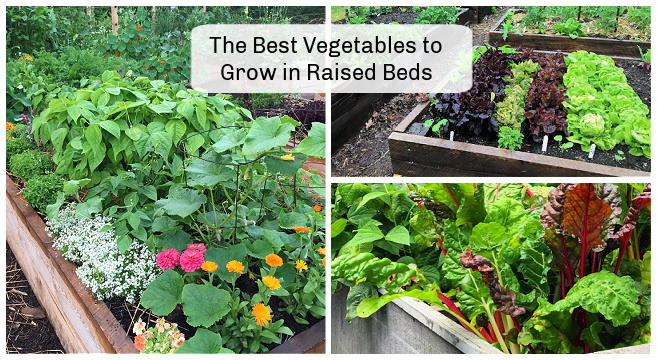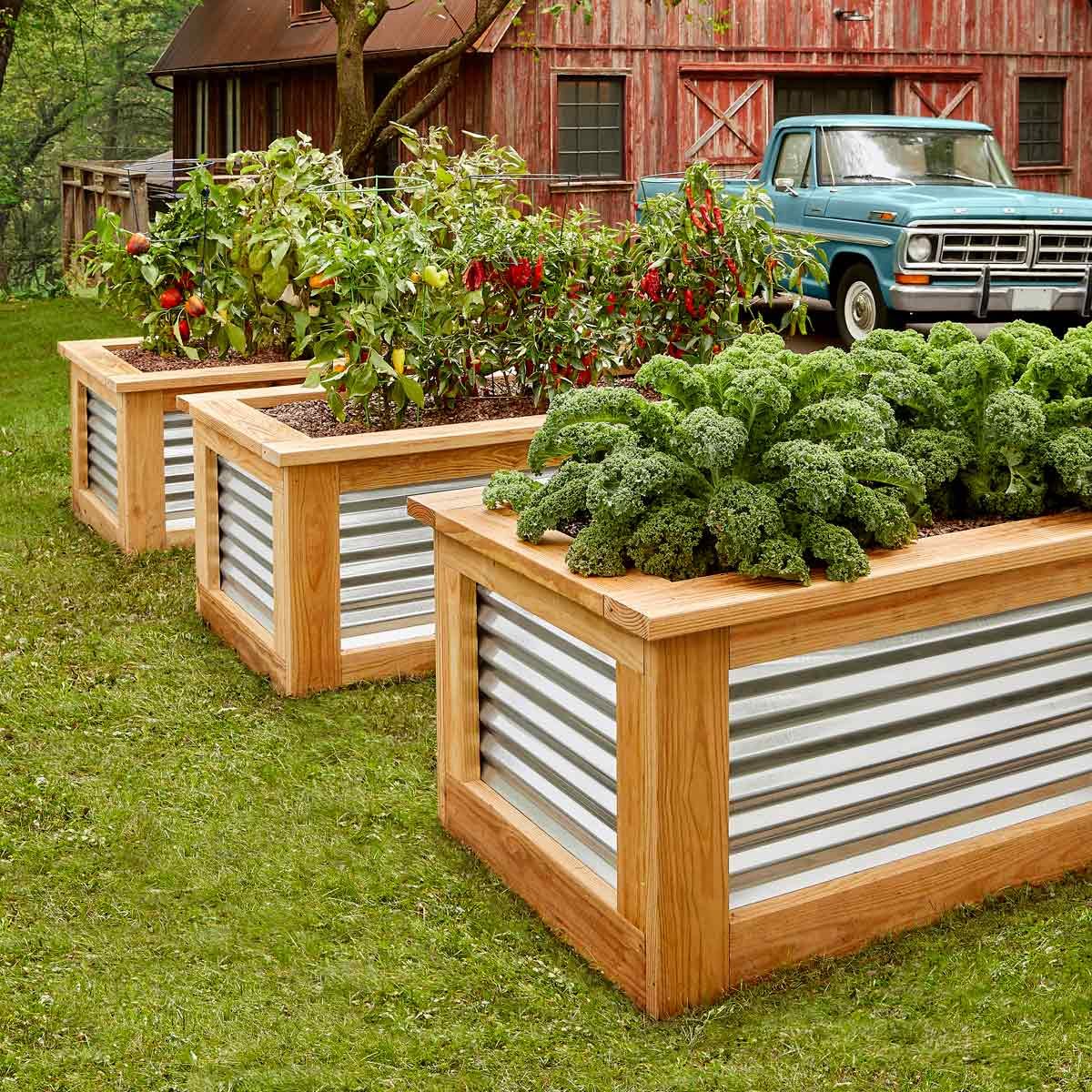How to Grow Easy Vegetables in Raised Beds

Are you dreaming of a lush, thriving garden but feel intimidated by the complexities of traditional gardening? Raised bed gardening might just be your perfect solution. Imagine it as the training wheels of gardening—easy to set up, simple to maintain, and incredibly rewarding. Let’s dive into the world of raised bed gardening and explore how to grow easy vegetables that will transform your backyard into a flourishing oasis.
Why Choose Raised Bed Gardening?
Raised bed gardening offers numerous advantages, making it an ideal choice for both beginners and seasoned gardeners. Here are a few reasons why you should consider it:
- Better Soil Control: You can fill your raised beds with high-quality soil, ensuring optimal growing conditions for your vegetables.
- Improved Drainage: Raised beds allow for better water drainage, preventing root rot and other moisture-related issues.
- Easier Maintenance: With raised beds, you can easily reach all parts of your garden, making weeding, watering, and harvesting a breeze.
- Extended Growing Season: The soil in raised beds warms up faster in the spring and stays warmer longer in the fall, giving you a longer growing season.
Getting Started: Building Your Raised Beds
Choosing the Right Materials
The first step in raised bed gardening is selecting the right materials for your beds. Common options include wood, composite materials, and metal. Wood is a popular choice due to its affordability and natural look. Cedar and redwood are particularly good options as they are naturally rot-resistant.
Size and Depth
The ideal size for a raised bed is 4 feet wide by 8 feet long. This size allows you to reach all parts of the bed without stepping into it, which can compact the soil. The depth of your bed should be at least 12 inches to provide ample room for root growth.
Location Matters
Choose a location that receives at least 6-8 hours of sunlight daily. Avoid areas that are prone to flooding or have poor drainage. A level surface is also important to ensure even water distribution.
Filling Your Raised Beds
Soil Selection
The key to successful vegetable growing is high-quality soil. A mix of topsoil, compost, and potting soil is ideal. This combination provides the right balance of nutrients, drainage, and aeration.
Adding Compost
Compost is the secret ingredient that enriches your soil with essential nutrients. You can make your own compost or purchase it from a garden center. Mix it well with your soil to create a nutrient-rich growing medium.
Easy Vegetables to Grow in Raised Beds
Lettuce and Spinach

Lettuce and spinach are perfect for beginners. They grow quickly and require minimal care. Plant seeds directly into the soil, spacing them about 4-6 inches apart. Keep the soil consistently moist, and you’ll have fresh greens in no time.
Radishes
Radishes are one of the easiest vegetables to grow. They mature quickly, often within 3-4 weeks. Plant seeds about 1 inch deep and 2 inches apart. Radishes prefer cooler temperatures, so they are ideal for early spring or late fall planting.
Carrots
Carrots are another simple vegetable that thrives in raised beds. They prefer loose, well-drained soil. Plant seeds about 1/4 inch deep and 2 inches apart. Keep the soil consistently moist until the seeds germinate, then water regularly.
Beans
Bush beans are easy to grow and produce a bountiful harvest. Plant seeds about 1 inch deep and 2-3 inches apart. Beans prefer full sun and well-drained soil. They are also nitrogen-fixing, which means they improve the soil for future crops.
Tomatoes
Tomatoes are a staple in many gardens. Choose determinate varieties for easier management in raised beds. Plant seedlings about 18-24 inches apart and provide support with cages or stakes. Tomatoes need plenty of sun and consistent watering.
Vegetable Growing Tips
Watering
Consistent watering is crucial for healthy vegetable growth. Aim for about 1 inch of water per week, either through rainfall or manual watering. Use a soaker hose or drip irrigation system to ensure even water distribution.
Mulching
Mulching helps retain soil moisture, suppress weeds, and regulate soil temperature. Use organic materials like straw, wood chips, or shredded leaves. Apply a 2-3 inch layer around your plants.
Fertilizing
Even with high-quality soil, your vegetables may benefit from additional fertilization. Use a balanced, slow-release fertilizer or organic compost tea. Apply according to the package instructions.
Pest Control
Pests can be a challenge, but there are natural ways to manage them. Use row covers to protect young plants from insects. Companion planting with herbs like marigolds and mint can also deter pests.
Common Challenges and Solutions
Weeds
Weeds can quickly take over your raised beds if left unchecked. Regular weeding is essential. Use a hoe or hand trowel to remove weeds as soon as they appear. Mulching can also help suppress weed growth.
Disease
Diseases can affect even the healthiest gardens. Practice good garden hygiene by removing diseased plants promptly and rotating crops to prevent the buildup of pathogens in the soil.
Poor Soil
If your soil is not performing well, consider testing it for nutrient deficiencies. Amend the soil with the appropriate fertilizers or compost to improve its quality.
Conclusion
Raised bed gardening is an excellent way to grow easy vegetables, even for beginners. With the right materials, soil, and care, you can transform your backyard into a thriving oasis of fresh produce. Whether you’re growing lettuce, radishes, carrots, beans, or tomatoes, the rewards of raised bed gardening are immense. So, why wait? Start your starter garden today and enjoy the fruits (and vegetables) of your labor.
FAQs
What are the best vegetables to grow in raised beds? Some of the best vegetables to grow in raised beds include lettuce, spinach, radishes, carrots, beans, and tomatoes. These vegetables are easy to grow and thrive in the controlled environment of raised beds.
How deep should a raised bed be for vegetables? A raised bed should be at least 12 inches deep to provide ample room for root growth. Deeper beds can accommodate a wider variety of vegetables.
What is the best soil for raised bed gardening? The best soil for raised bed gardening is a mix of topsoil, compost, and potting soil. This combination provides the right balance of nutrients, drainage, and aeration.
How often should I water my raised bed garden? Aim for about 1 inch of water per week, either through rainfall or manual watering. Use a soaker hose or drip irrigation system to ensure even water distribution.
How can I control pests in my raised bed garden? Use row covers to protect young plants from insects. Companion planting with herbs like marigolds and mint can also deter pests. Regularly inspect your plants and remove any pests you find.

With these tips and insights, you’re well on your way to growing a beautiful and productive raised bed garden. Happy gardening!
0 Response to "How to Grow Easy Vegetables in Raised Beds"
Post a Comment